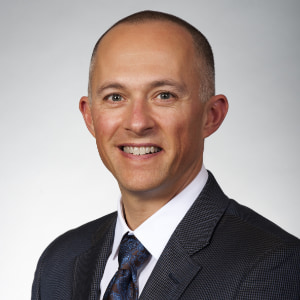In 2010, I attended a conference on exercise and physical activity in aging. The programming, which was excellent, focused almost exclusively on the impact of aging on body systems, as well as the latest evidence on exercise prescription. This conference inspired me to pursue the Certified Exercise Expert for Aging Adults (CEEAA) course series offered through the Academy of Geriatric Physical Therapy. At the end of the conference in 2010, the final keynote speaker posed a “so what” question to the audience.
While the science supports everything we do as therapists in terms of exercise prescription, the keynote speaker asked, “what if your patients do not follow your recommendations?” The speaker then presented population health-level data that demonstrated just that – poor adherence to our recommendations and subsequent decline and worsening of chronic diseases. Our patients do great when they are with us and achieve the goals we set with them, but often decline after they return home, with many requiring hospitalizations again.
Fast-forward six years to the second edition of this same exercise conference, and guess what? There was a completely different focus. Consider the following session topics: National Falls Prevention Initiatives, Motivating Older Adults to Engage in Physical Activity, Making Clinical-Community Connections for Fall Prevention, Use of Distant Delivery Interventions, Community-Based Fall Prevention, A Public Health Perspective on Promoting Physical Activity in Older Adults, and Community-Based Group Exercise programs. Do you see a theme here?
The evidence and science behind exercise is no longer in question. The focus now is at a public health level and determining how to achieve long-term behavior change in order to improve the health of the older adult population. Consider what else has transpired in the six years since that initial exercise conference. Health care reform has shifted the focus of health care providers to achieving better outcomes. Moreover, the Affordable Care Act (ACA) triggered several new payment models that reward keeping older adults healthy for the long-term and penalize negative outcomes, such as re-hospitalization.
This recent conference really challenged my thinking in terms of our roles as therapists in skilled nursing facilities, home health, and assisted and independent living communities. How can we use our skills to have a positive influence on this new focus of improving long-term adherence to our recommendations and participation in evidence-based community exercise programs?
A recent study examined adherence to physical therapy home-based exercise programs and found that it was poor due to patients having to implement new behaviors and integrate them into daily life (Basset, 2016). In a past edition of the Insider, I suggested we start thinking about a guarantee of the outcomes from our interventions, not unlike a warranty you get when you purchase a major appliance or a new car.
I propose a strategy to achieving a “therapy warranty” and improving longitudinal outcomes, which is to improve our focus on self-management by our patients. Therapists, especially OTs and SLPs, have an opportunity to use their formal education in cognitive behavioral interventions to improve long-term behavior change and ultimately reduce the risk of re-hospitalization. We need to do a better job of meeting patients where they are psychologically in terms of behavior change by incorporating established behavior change theories, such as the transtheoretical model of behavior change. This model assesses an individual’s readiness to act on a new healthier behavior and provides strategies to guide the individual through the stages of change. Why not engage them in this process while they are with us instead of crossing our fingers and hoping they adhere to all of our instructions after discharge?
In summary, therapists already play a critical role in improving the health and well-being of the older adults we serve and I strongly believe that by deliberately incorporating cognitive behavioral strategies into our plans of care, we will only improve upon the long-term outcomes of our patients. I would love to hear your thoughts
Regards,
______________________________________________
Mike Billings, PT, MS, CEEAA – President, Infinity Rehab
Mike has been in the rehab industry since 1991 with a focus on older adult rehab since 1995. He has an exceptional ability to analyze data and apply the results to actual practice.
Mike oversees all operations for Infinity Rehab, supporting his leadership team with training, support and leadership. His extensive experience in rehab management gives him particular insight into employee training and retention as well as client relations. His special interests include managing evidence based clinical programs and patient outcomes with special emphasis on therapeutic exercise for the older adult.
______________________________________________
Reference
Bassett, S.F. (2016). Bridging the intention-behaviour gap with behavior change strategies for physiotherapy rehabilitation non-adherence. New Zealand Journal of Physiotherapy, 43(3), 105-111.






